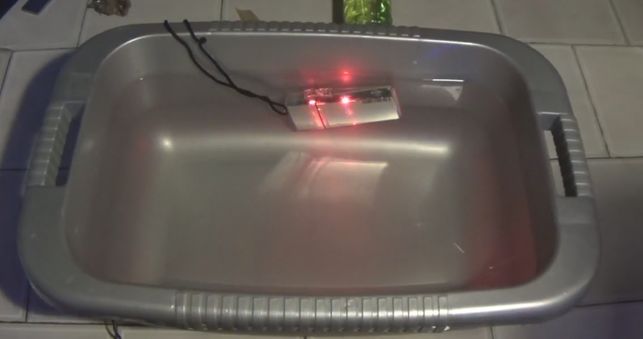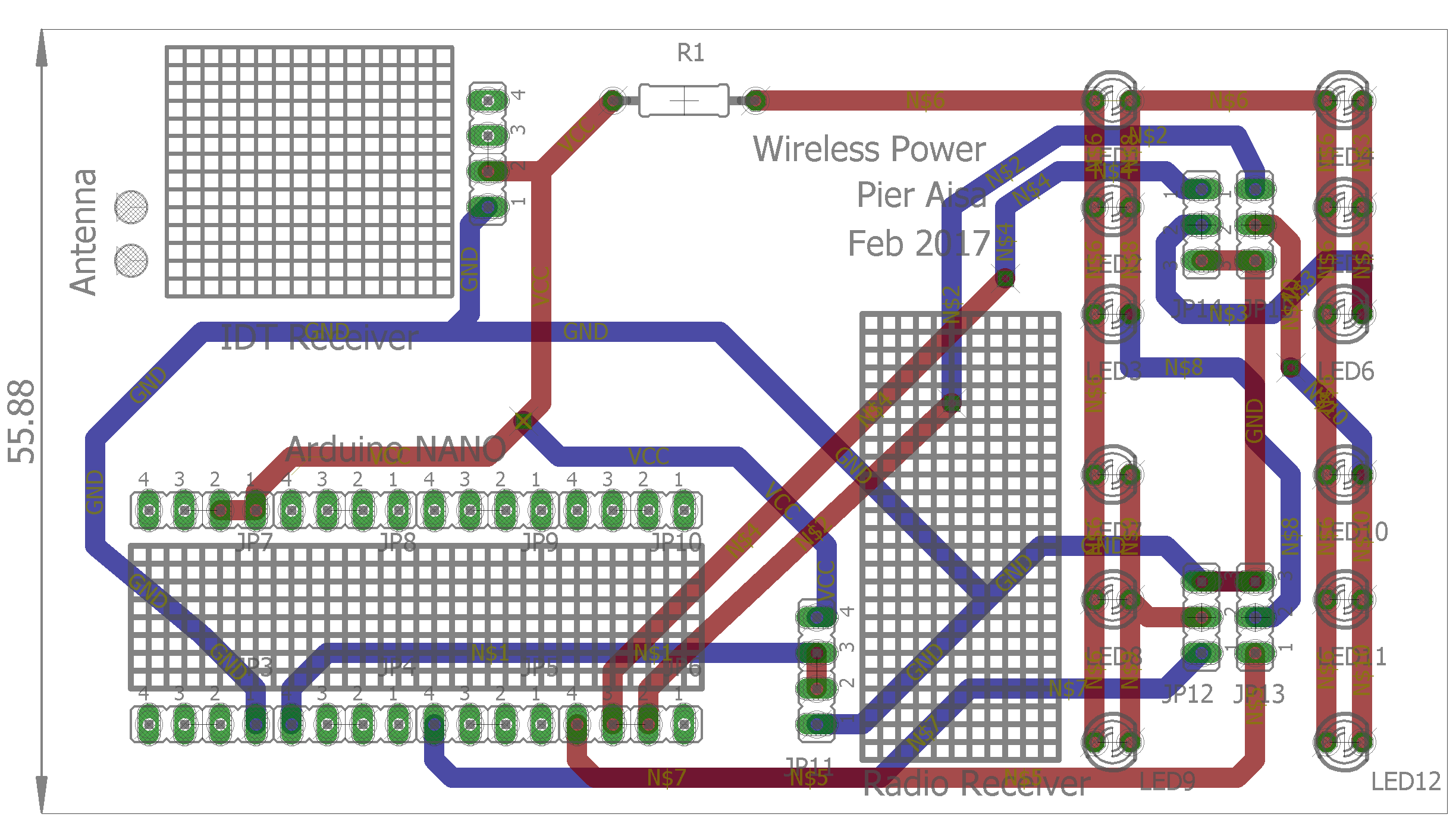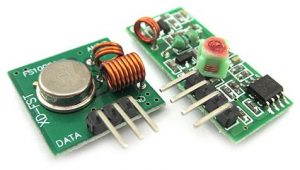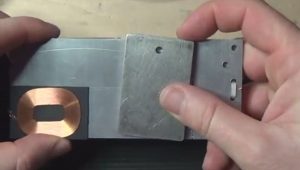Wireless Power Aquarium
Wireless Power Aquarium allows to have a nice and emotional light experience for your fishes, without the need to have cabling to the waterproof lamps. The lamps are sealed in a waterproof enclosure and are based on LED technology. An external Wifi Power station provides the necessary energy to supply the lamps outside from the aquarium. The power station will manage, light dimmer, color and special effects depending on the type of fishes. LEDs can be selected as simple RGB Leds, that can vary autonomously their colors or specific wavelength LEDs in order to feed the plants into the Aquarium and avoid the algae generation. Another application is related to the purification of water, by using Ultraviolet LEDs specific for water purification.
- Creativity and originality
The idea comes for different thinking in what field of application can be exploited the feature to transfer energy without cabling and a direct connection. Water is a very good candidate, because is not a comfortable environment for electronics and in general applications shall be protected against the presence of water. Therefore the possibility to exploit wireless power to supply and feed energy to something that is inserted in water was reputed a good idea. I think to the day by day life and the idea for an Aquarium comes to me first, in order to have nice light effects for the fishes and for people looking to the Aquarium. In order to simplify and to use as much as possible the wifipower I choose a stand-alone RGB LED set, that by simply be supplied can do the job for us, by changing autonomously its color. Then I think to something more complex, in order to give the possibility to the user to drive the LEDs brightness, wavelength, duty cycles and light combinations effects. To do this I inserted a miniaturized and low power device such as Arduino Nano to drive the LEDs. In addition, in order to drive the Arduino NANO inside the Water an external Radiofrequency transmitter and internal Radiofrequency receiver operating at 433 MHz has been inserted. This Radio frequency was chosen due to low power consumption and very good propagation across water and Aquarium materials
- Possible Configurations
The Wireless Aquarium receiver has been engineered into a PCB with these two possible configurations, by selecting jumpers and different mountings:
Configuration 1 – LEDs always ON: in this case only IDT Receiver and RGB LEDs are necessary. The LEDs are always turned ON. The User can choose the number of LEDs and the type fixed color or RGB autonomously changing LEDs

Configuration1: LEDs always ON
Configuration 2 – Remote LEDs Drive : The User can also drive the status and the luminosity, brightness of the LEDs, by exploiting an on-board Arduino NANO and Radiofrequency receiver mounted on the Wireless Power Receiver. in this case into the PCB the following materials have to be mounted: Arduino NANO and Radio-Frequency Receiver operating at 433MHz. The User will use another Arduino and Radio frequency transmitter to drive LEDs

Configuration 2 – Remote LEDs Drive
In this configuration the Arduino Nano drives the LEDs in four groups:
PWM output D9 to drive LED 1,2,3
PWM output D10 to drive LED 4,5,6
PWM output D6 to drive LED 7,8,9
PWM output D11 to drive LED 10,11,12
- User experience
The User can felt the magic of having energy into the water without cables, like Nikola Tesla did one century ago….
- Videos 2-5 minutes
Official Video in ENGLISH language for the CONTEST
https://www.youtube.com/watch?v=-OosySAhubU
Video of the test and prototypes in ITALIAN language for my fans in my YouTube channel https://www.youtube.com/c/PierAisa
https://www.youtube.com/watch?v=-OosySAhubU
- Practicability
The Wireless Aquarium is easy to be build and put in service. Simple materials to be retrieved in commerce. Simple to mount. Simple to use.
- Impact on people’s quality of life
To have a nice environment in its own house is something that increase the quality of life. Let’s imagine in the evening when there is less light, that you have the water that spread a lot of beautiful colors in the room. Or if you have some container in which you want purified water without expensive systems, you can use simply UV LEDs driven Wireless.
- Detailed Photos

bare pcb first prototype

Neodymium magnet and steel holder

Transmitter with enclosure

Receiver insertion into enclosure

DRY Test First prototype

DRY test with Nice colors with delayed RGB LEDs: always ON mode

WATERPROOF First test with RGB LEDs: always ON mode

WATERPROOF First test with RGB LEDs: always ON mode. Effect of water light diffusion

Electrical Scheme
Scheme Description
- The Berg Strip Female JP2 is used to connect the IDT Receiver Module.
- The Berg Strip Female JP11 is used to connect as an option the Radiofrequency MX-05V 433MHZ RF Wireless Receiver Module
- The strip holders from JP3 to JP8 are used to connect as an option the Arduino NANO
- The LEDs 1 to 12 are used to hold the LEDs as per User needs
- The jumper JP12 in position 2-3 let the User to maintain the LEDS 7,8,9 always ON. In position 1-2 let the control of the LEDS 7,8,9 to Arduino NANO
- The jumper JP13 in position 2-3 let the User to maintain the LEDS 11,12,13 always ON. In position 1-2 let the control of the LEDS 11,12,13 to Arduino NANO
- The jumper JP14 in position 2-3 let the User to maintain the LEDS 4,5,6 always ON. In position 1-2 let the control of the LEDS 4,5,6 to Arduino NANO
- The jumper JP15 in position 2-3 let the User to maintain the LEDS 1,2,3 always ON. In position 1-2 let the control of the LEDS 1,2,3 to Arduino NANO

Board layers

Board Silkscreen
The hardware is based on a PCB with dimensions 56×80 mm double layers, with the electrical scheme represented hereafter.
Bill of Materials
- All the Berg Strip Female are 4 pins

Berg female 4 pin
- Radiofrequency MX-05V 433MHZ RF Wireless Receiver Module and MX-FS-03V Transmitter Module Kit For Arduino Raspberry Pi AVR ARM

Radio Transceivers
- Arduino NANO

Aruino NANO
- IDT Modules with antenna

IDT Modules
- RGB 2 pin LEDS 3V3

RGB LEDs
- UV 2 pin LEDS 3V3

UV LEDs
- R1 Resistor 100 ohm 0,25W
- Waterproof IP7 1 meter enclosure

IP7 Container 1 meter
- Neodymium magnets and steel holders

Neodymium magnet and steel holder
The Wireless Aquarium has the following code modules when used in the “Configuration 2 – Remote Drive LEDs”:
- WiPowerRx.ino:Code on Transmitter Arduino UNO with Radiofrequency MX-FS-03V 433MHZ:
- WiPowerTx.ino: Code on Receiver Arduino NANO with Radiofrequency MX-05V 433MHZ
For Arduino UNO transmittinf Needed VitualWire library,
Library download link VirtualWire
Sources download link WIRELESSPOWER.AQUARIUM.Sources
SOURCE1: WiPowerRx.ino: This simple piece of code drives 3 groups of LED with the following interface:
When the User transmit a single char from the transmitter Arduino based the following behavior happens:
char 1 drive LED group 123 in OFF state
char 2 drive LED group 123 in half brightness state
char 3 drive LED group 123 in ON state
char 4 drive LED group 456 in OFF state
char 5 drive LED group 456 in half brightness state
char 6 drive LED group 456 in OFF state
char 7 drive LED group 789 in ON state
char 8 drive LED group 789 half brightness state
char 9 drive LED group 789 in OFF state
SOURCE2: WiPowerTx.ino : This simple piece of code drives as an example the groups of LED123 with ON state and mid brightness state
char 3 drive LED group 123 in ON state
char 2 drive LED group 123 in half brightness state
char 1 drive LED group 123 in OFF state
Sources in plain text
/** PierAisa: Wireless Power Rx module – Feb 2017
Receive commands from external Arduino
*/
#include <VirtualWire.h>
int j=0;
int led123 = 6 ;
int led456 = 9 ;
int led789 = 10 ;
void setup()
{
vw_set_rx_pin(2);
vw_set_ptt_inverted(true); // Required for DR3100
vw_setup(200); // Bits per sec
vw_rx_start(); // Start the receiver PLL running
}
void loop()
{
uint8_t buf[VW_MAX_MESSAGE_LEN];
uint8_t buflen = VW_MAX_MESSAGE_LEN;
if (vw_get_message(buf, &buflen)) // Non-blocking
{
int i; j++;
digitalWrite(13, true); // Flash a light to show received good message
for (i = 0; i < buflen; i++)
{
// Serial.print(buf[i], HEX);
if(char(buf[i])=”1″) analogWrite(led123,0);
if(char(buf[i])=”2″) analogWrite(led123,125);
if(char(buf[i])=”3″) analogWrite(led123,255);
if(char(buf[i])=”4″) analogWrite(led456,0);
if(char(buf[i])=”5″) analogWrite(led456,125);
if(char(buf[i])=”6″) analogWrite(led456,255);
if(char(buf[i])=”7″) analogWrite(led789,0);
if(char(buf[i])=”8″) analogWrite(led789,125);
if(char(buf[i])=”9″) analogWrite(led789,255);
}
digitalWrite(13, false);
}
}
/** PierAisa: Wireless Power Tx module – Feb 2017
Transmit commands from external Arduiino
Cycle LED ON MID LIGHT OFF example
*/
#include <VirtualWire.h>
int j = 0 ;
void setup()
{
Serial.begin(115200);
Serial.println(“Wireless Power Tx module “);
vw_set_tx_pin(2); // trasmissione sul pin2
vw_set_ptt_inverted(true); // Required for DR3100
vw_setup(200); // Set 200 Bits per sec
}
void loop()
{ j++;
const char *msg1 = (“3”);
digitalWrite(13, true);
vw_send((uint8_t *)msg1, strlen(msg1));
vw_wait_tx(); // Wait until the whole message is gone
Serial.print(j);Serial.println(“LED123 ON”);
digitalWrite(13, false);
delay(2000);
const char *msg3 = (“2”);
digitalWrite(13, true);
vw_send((uint8_t *)msg3, strlen(msg3));
vw_wait_tx(); // Wait until the whole message is gone
Serial.print(j);Serial.println(“LED123 ON”);
digitalWrite(13, false);
delay(2000);
const char *msg2 = (“1”);
digitalWrite(13, true);
vw_send((uint8_t *)msg2, strlen(msg2));
vw_wait_tx(); // Wait until the whole message is gone
Serial.print(j);Serial.println(“LED123 ON”);
digitalWrite(13, false);
delay(2000);
}
Conclusion
This idea with simple but smart elements, demonstrates the magic of wireless power energy in a day to day application for all people by injecting energy through the water and to take benefits avoiding cables and cords.

